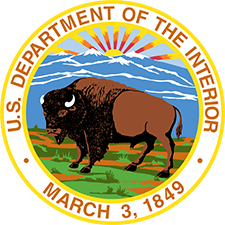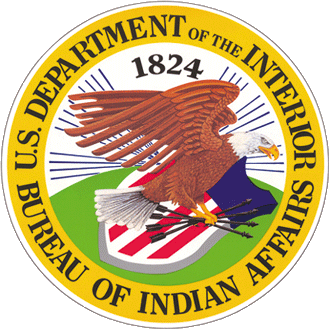The Branch of Fisheries, Wildlife and Recreation (BFWR) provides competitive funding to achieve compliance with Section 7 of the Endangered Species Act (ESA) for Tribal projects developing, utilizing, or managing Trust resources, or for projects that benefit Federally ESA-listed or Tribally-significant species on Tribal lands.
Projects for the BFWR Endangered Species Program may encompass either endangered species as identified in the ESA or Tribally-significant species as identified in a Tribal document, management plan, or Tribal Resolution. Priority consideration will be given to projects achieving ESA compliance and approval to utilize Trust resources for subsistence, economic, or other purposes beneficial to the applicant.
How to Apply
BFWR is not currently accepting project proposals for funding. Please check back as the 2026 Request for Funding Proposals (RFP) and application dates will be posted.
Federally-recognized Tribes and Tribal Organizations may submit project proposals to the Endangered Species Program contact at their Bureau of Indian Affairs (BIA) Regional Office. Project proposals are scored according to published ranking criteria, with the highest-scoring projects receiving funding. Projects which are required by law as part of section 7 of the Endangered Species Act will receive priority.
Each application may request up to $120,000 in project funding.
Detailed information on what to include in your project proposal, ranking criteria, and information on BIA Regional Office Invasive Species Program contacts can be found in the annual application linked below.
Previously Funded Endangered Species Projects
Wápupxn - Canada Lynx (Lynx canadensis)
Confederated Tribes of the Colville Reservation
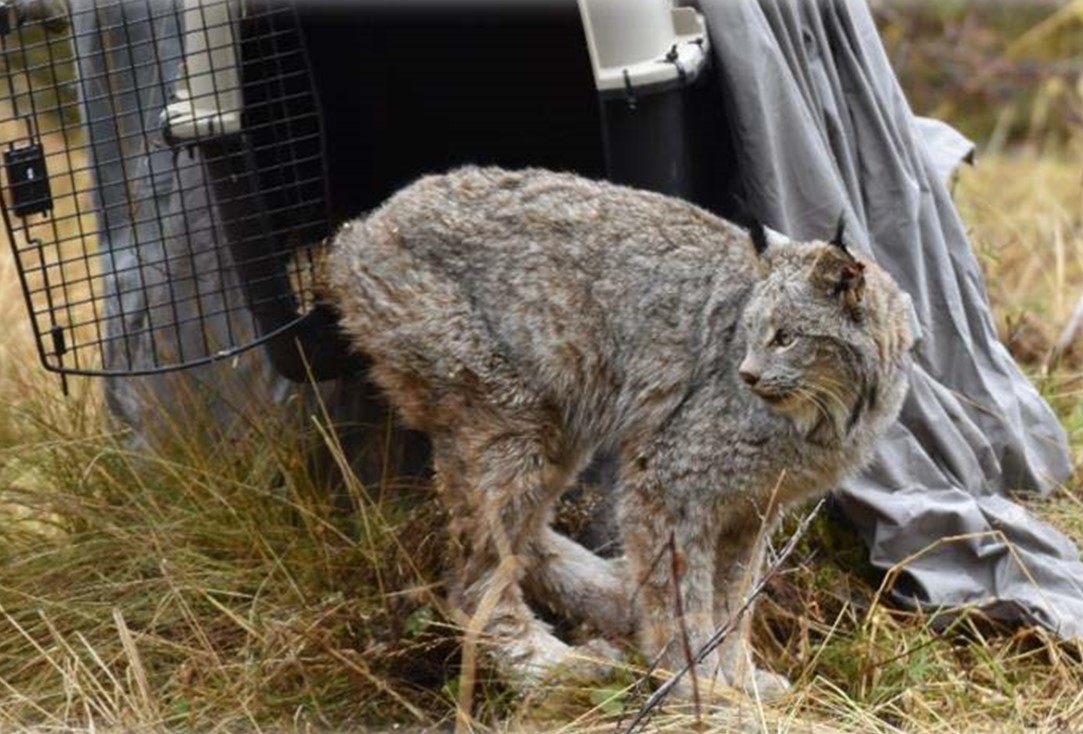
A lynx is released from its cage onto reservation land after undergoing processing by the Tribes' Fish and Wildlife Department. Photo provided by Rose Piccinini, Wildlife District Biologist for the Confederated Tribes of the Colville Reservation.
Wápupxn (lynx) are a culturally and traditionally significant species that once occurred as a natural part of the landscape but trapping and habitat loss caused populations to decline. In 2000, wápupxn were listed by the US Fish and Wildlife Service as Threatened under the Federal Endangered Species Act and are considered Threatened by the Confederated Tribes of the Colville Reservation Fish and Wildlife Department (CTCRFWD). The Confederated Tribes of the Colville Reservation (CTCR) received the first round of funding in 2020 from the Bureau of Indian Affairs and US Fish and Wildlife Service to begin implementing a five-year Canada lynx augmentation project in the Kettle Range in northcentral Washington. The CTCRFWD's efforts have already shown to protect and restore tribal trust resources, contribute to state and regional lynx conservation and research, and provide data to inform habitat protection and land management decisions on and off the Reservation.
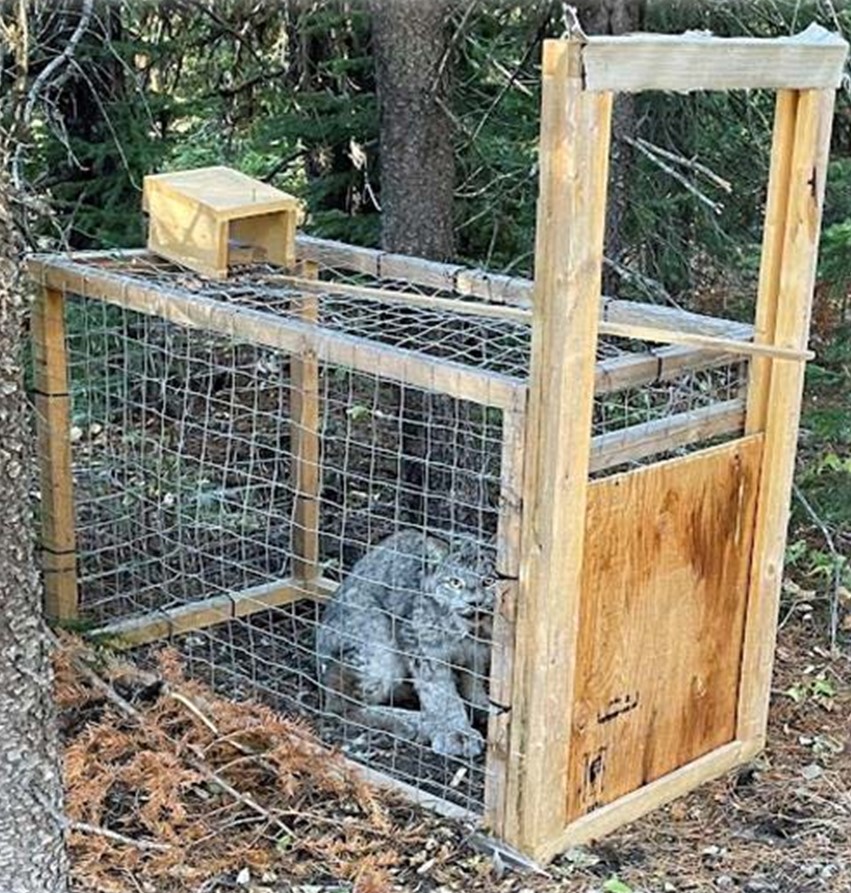
A lynx trapped within the confines of one of the project's live traps. Photo provided by the Confederated Tribes of the Colville Reservation Fish and Wildlife Department.
Starting in the winter of 2021/2022 a team of Tribal Biologists, Okanogan Nation Alliance, Conservation Northwest and other partners traveled to Kelowna BC to work with local trappers to live trap Canada lynx. The first year they trapped 9 lynx, the second year 10 lynx, the third yea 7 lynx, and the fourth year they trapped 10 lynx. Once processed (biologists collect biological samples and measurements and attach ear tags and GPS collars) individuals are released on the Reservation.
Monitoring through the use of GPS software, radio telemetry and camera sets will determine habitat use, daily and seasonal movement, territory establishment, home range size, breeding outcomes and mortality data. Mortality events are received immediately via text and email, and project staff will attempt to retrieve the carcass and determine cause of death. Daily, weekly, and monthly GPS data will be used to develop occupancy, distribution and habitat use maps for all collared lynx.
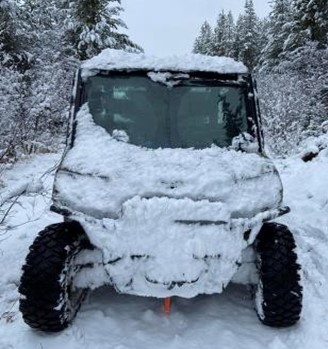
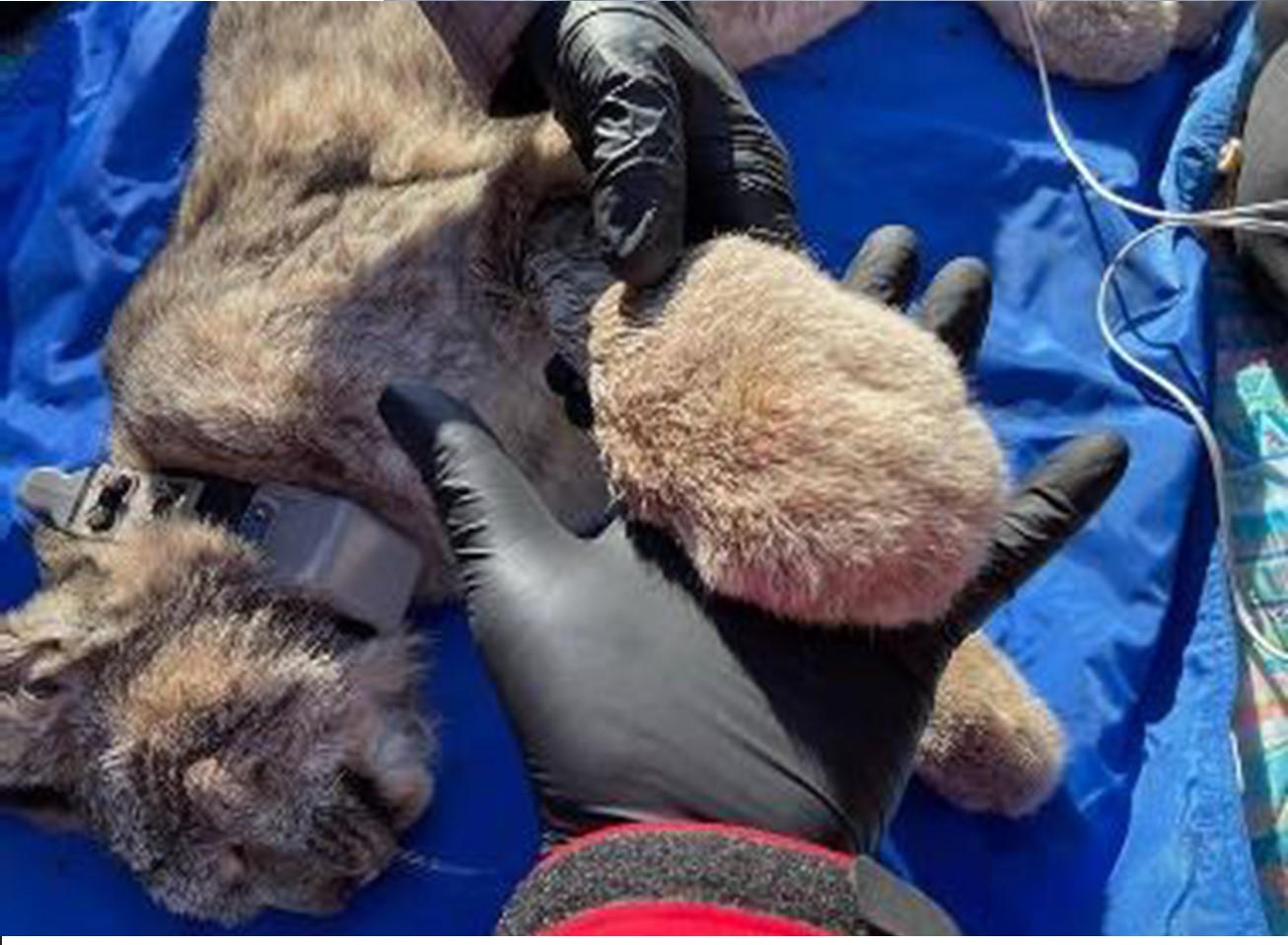
Left photo: Side-by-side utility vehicles are critical in navigating the remote, mountainous terrain throughout the project's areas. Right photo: Project biologists work quickly once a lynx is sedated to collect samples, take photos and measurements, place ear tags, and fit GPS collars. This photo illustrates the large paw size among lynx.
Results will be used at a local and regional scale to ensure the success of the augmentation effort and to develop the CTCR Canada Lynx Relationship Plan that will ensure that land management practices are protecting lynx populations. Summary data will also be used to provide input to forest practice and land management projects on Tribal and non-Tribal lands. A secondary benefit of this monitoring will lead to a better understanding of the distribution of other forest carnivores (many of which are threatened and endangered species) such as gray wolves (Canis lupus), coyotes (Canis latrans), black bears (Ursus americanus), bobcats (Lynx rufus), cougars (Puma concolor), grizzly bears (Ursus arctos), wolverines (Gulo gulo), pine martens (Martes americana) and fishers (Martes pennanti). The protection and recovery of wápupxn is not only important for the Tribe but also for the regional conservation of lynx across Washington and Canada.
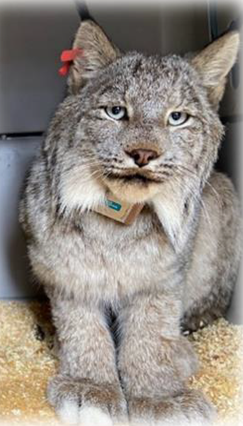
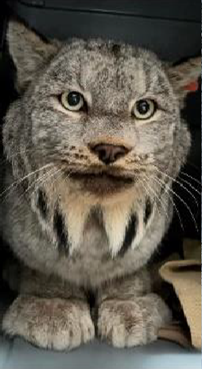
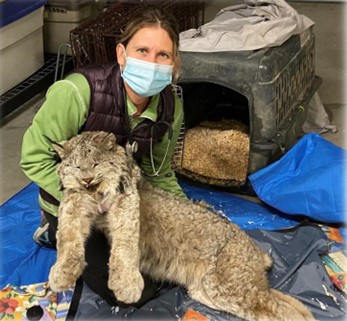
Left and middle photos: Lynx that are alert and perched within their kennels after processing. Each received ear tags and a radio collar that will provide location data every 13 hours and last up to 2 years. Right photo: Tribal Wildlife Biologist, Rose Piccinini, holds a sedated lynx that has been trapped for processing and evaluation. Photos provided by the Confederated Tribes of the Colville Reservation Fish and Wildlife Department.
BFWR Regional Contact Information
| Region | Contact Name | |
|---|---|---|
| Alaska | Rosalie Debenham, Fisheries and Wildlife Biologist | [email protected] |
| Eastern | Mikail Kane, Natural Resources Specialist | [email protected] |
| Eastern Oklahoma | Justin Morgan, Soil Conservationist | [email protected] |
| Great Plains | Diane Mann-Klager, Natural Resources Officer | [email protected] |
| Midwest | Drew Becker, Regional Branch Chief of Fish, Wildlife, and Parks | [email protected] |
| Navajo | Calvert Curley, Natural Resource Manager | [email protected] |
| Northwest | Robert Compton, Rangeland Management Specialist | [email protected] |
| Pacific | Peter DeJongh, Regional Biologist | [email protected] |
| Rocky Mountains | Frank (Desi) Rollefson, Wildlife Biologist | [email protected] |
| Southern Plains | Michael Hardsaw | [email protected] |
| Southwest | D. Chris Kitcheyan, Regional Biologist | [email protected] |
| Western | Catherine Wilson, Supervisory Water Rights Specialist | [email protected] |

Additional Information
Related Pages
Contact Us
Albuquerque, NM 87104

